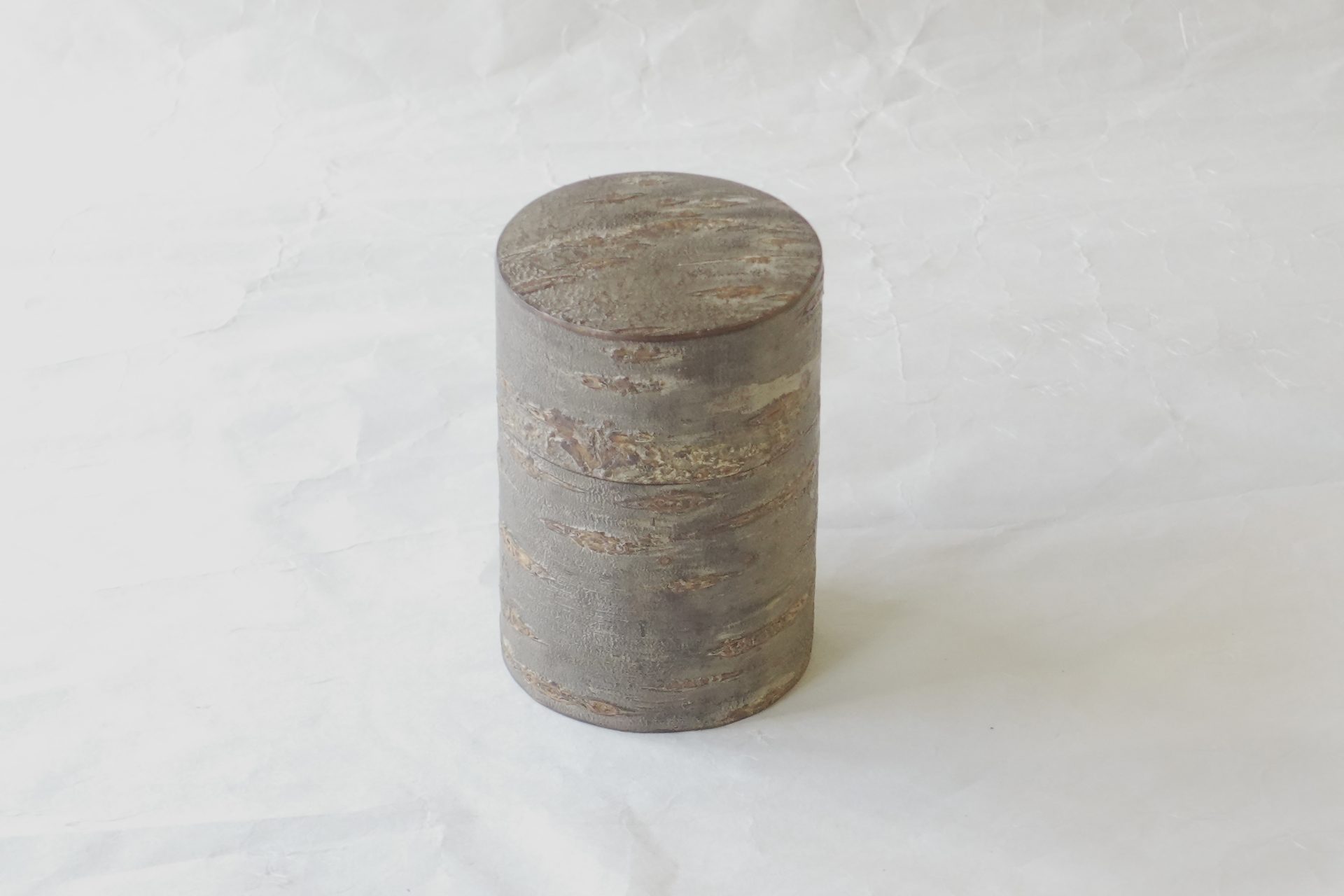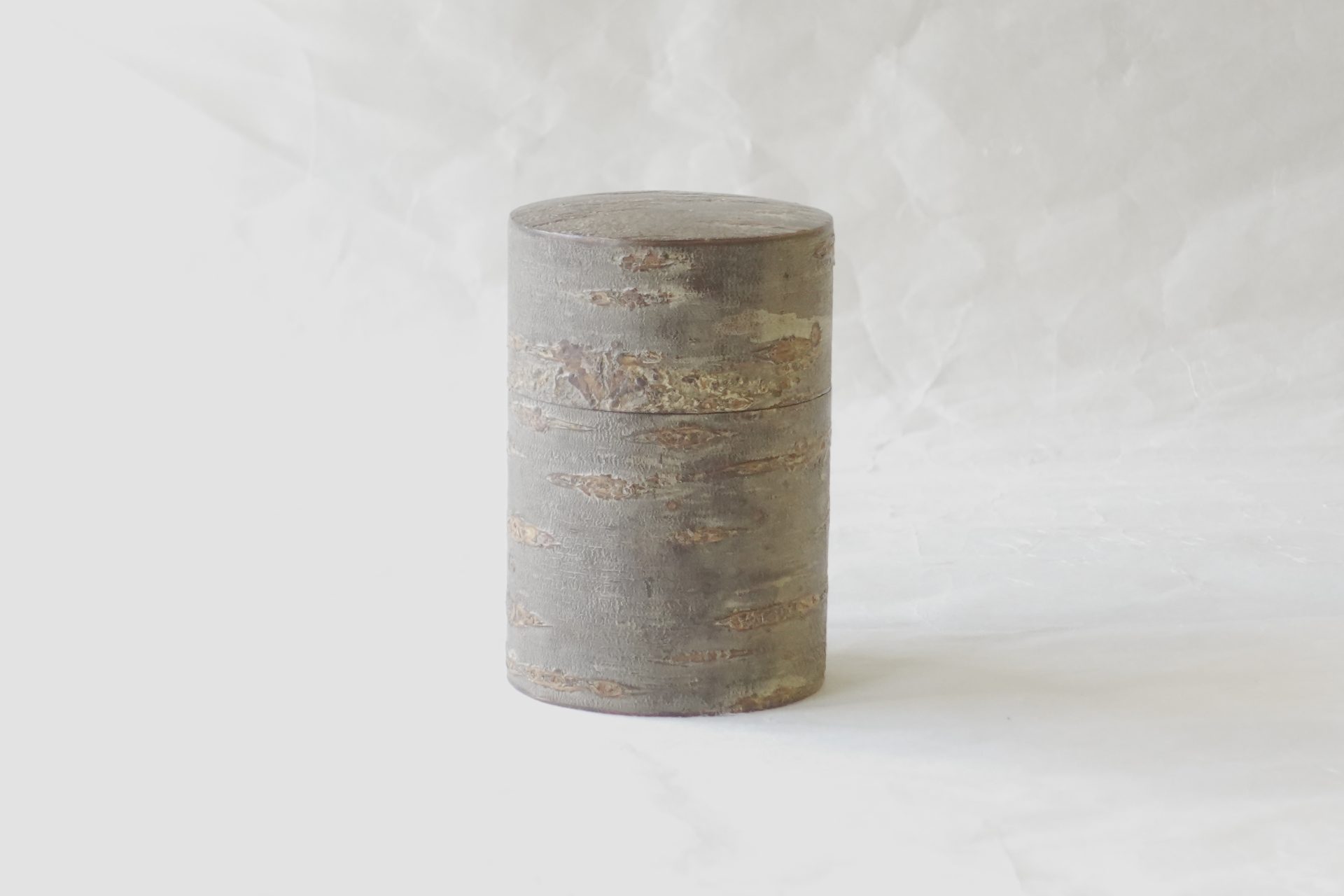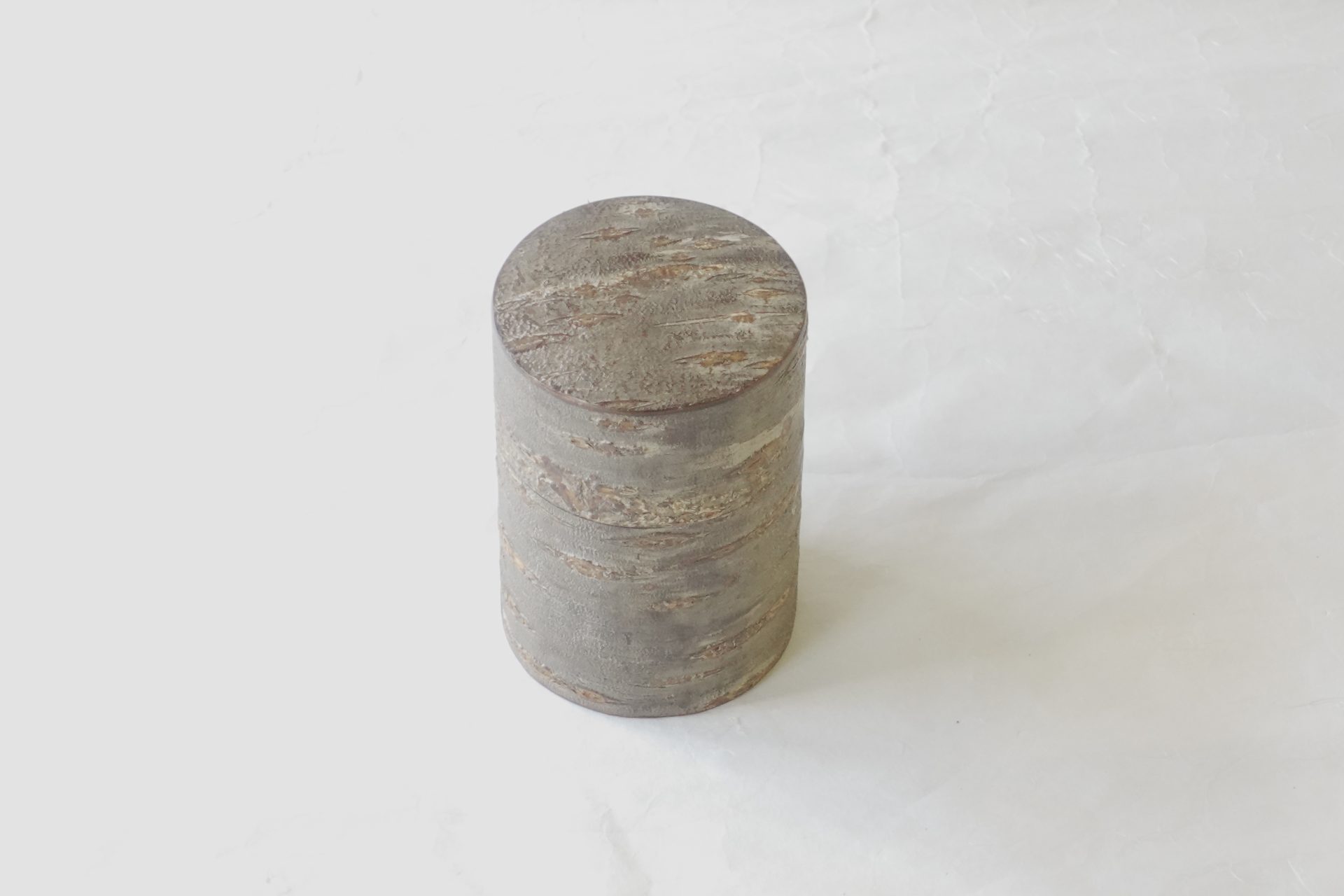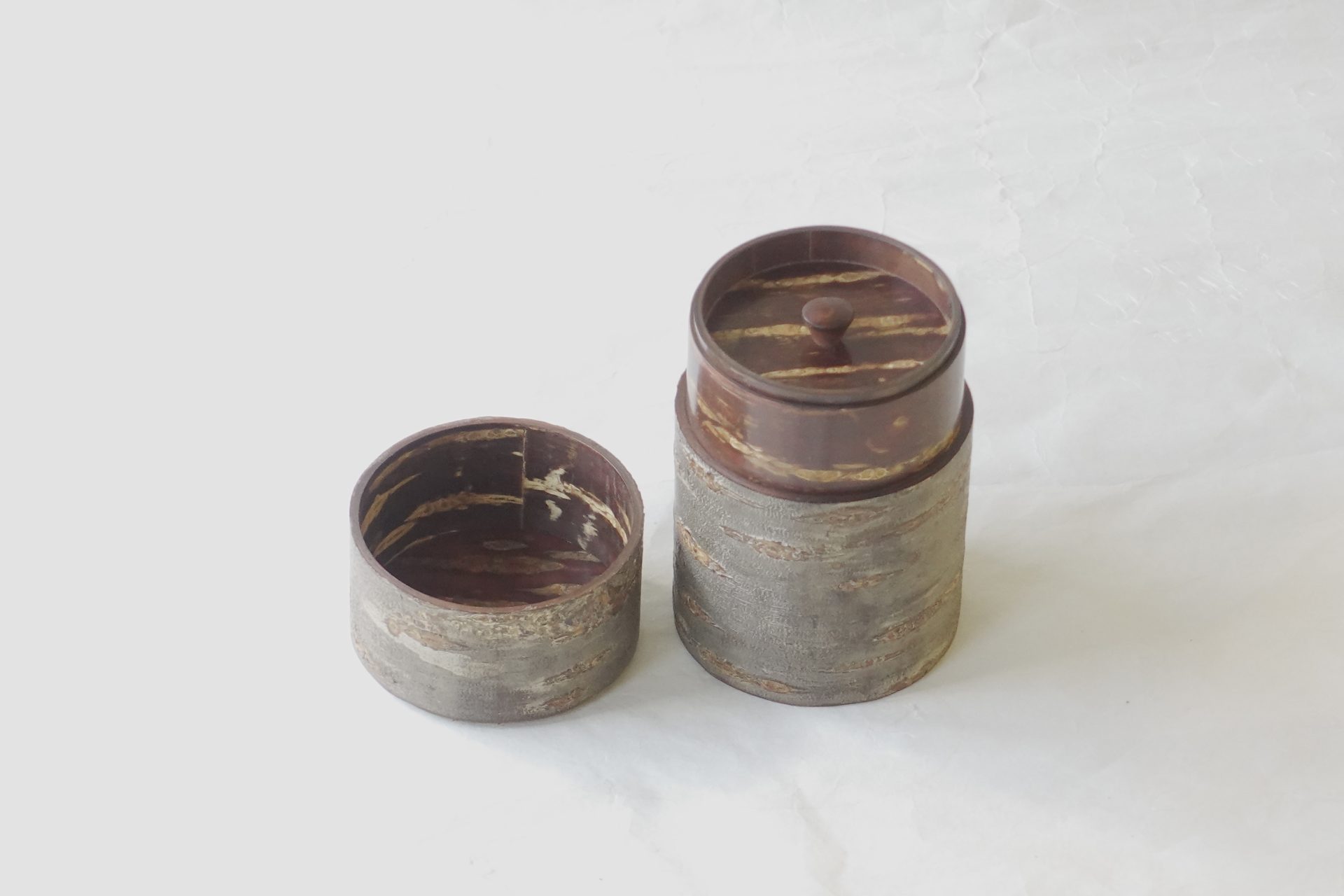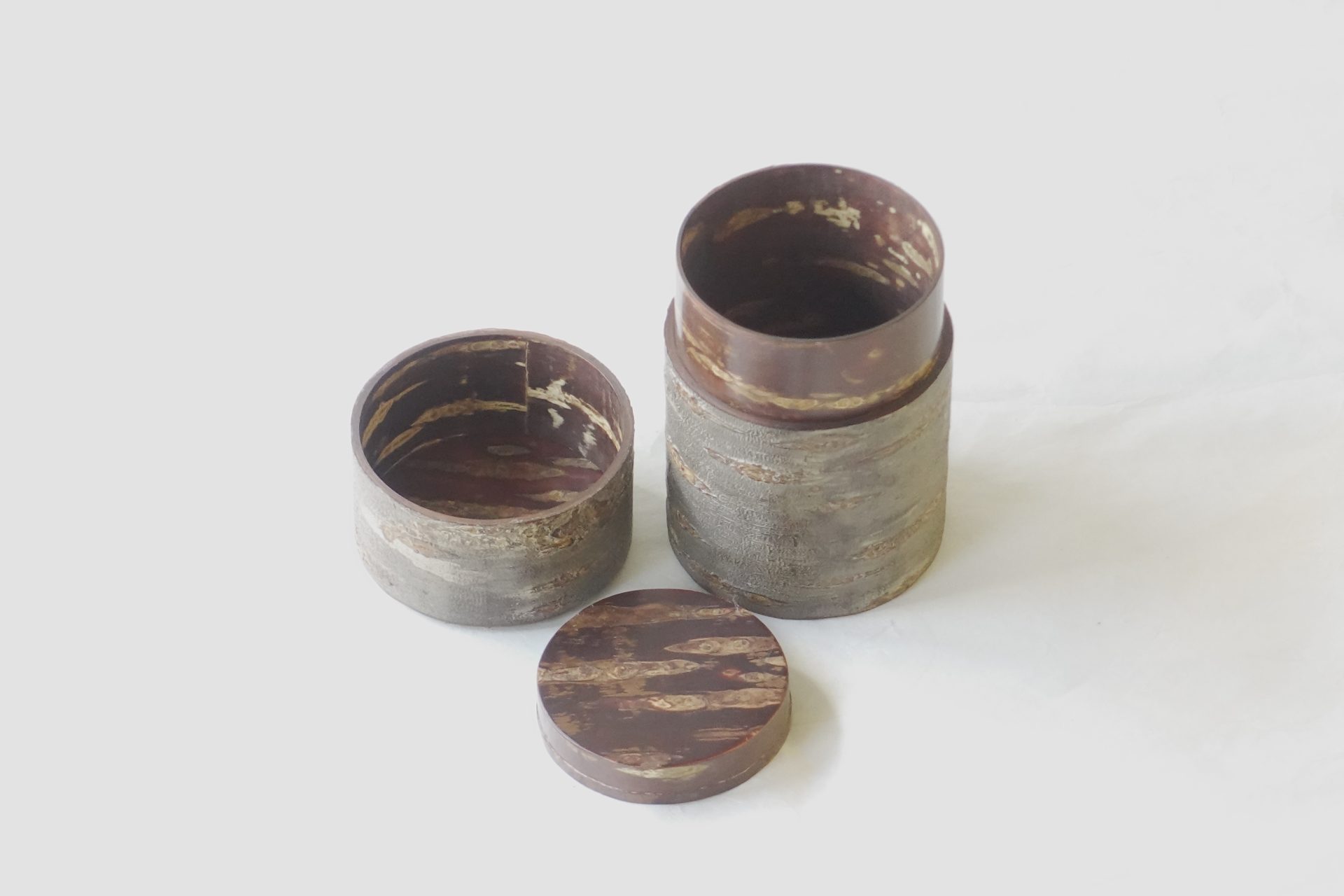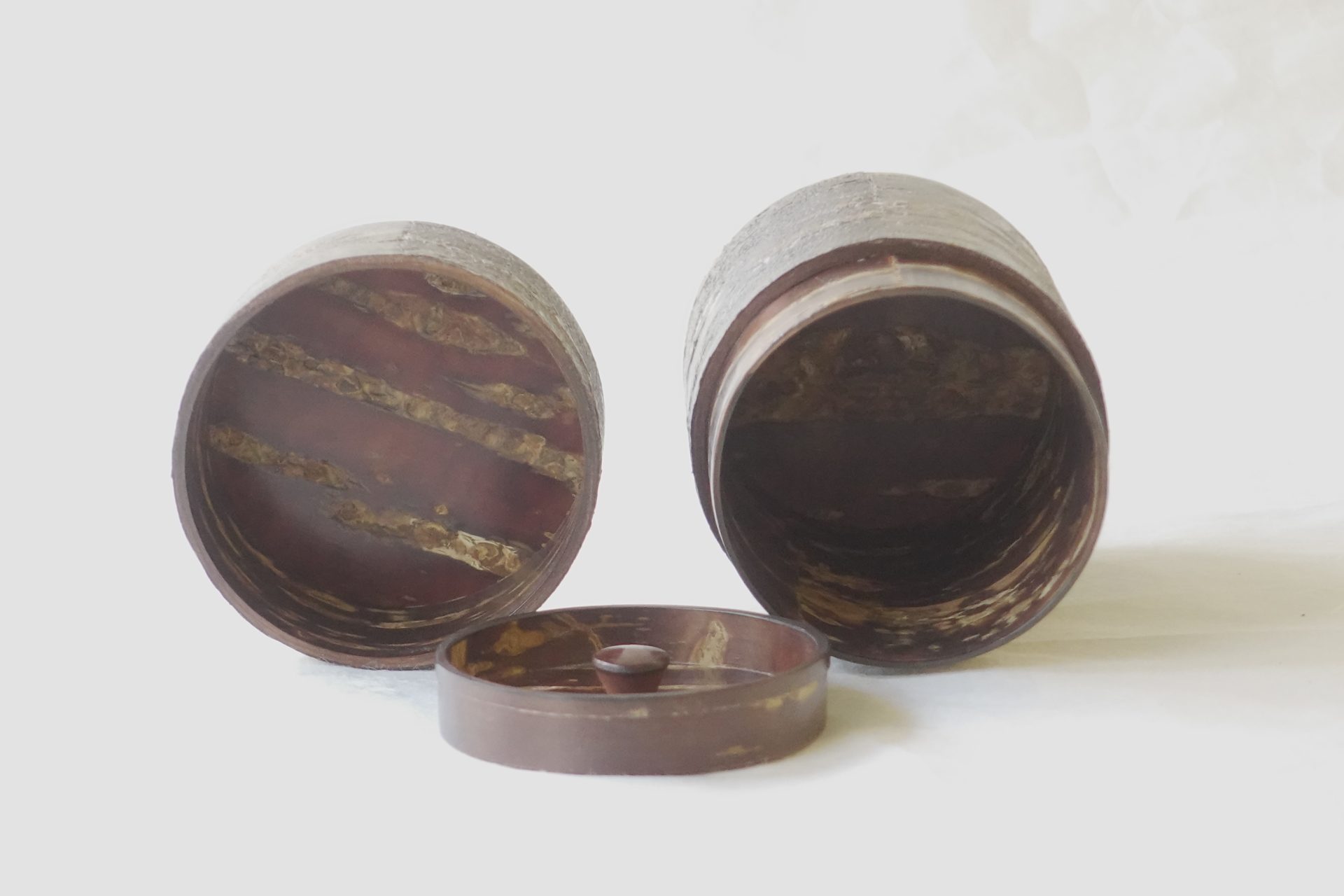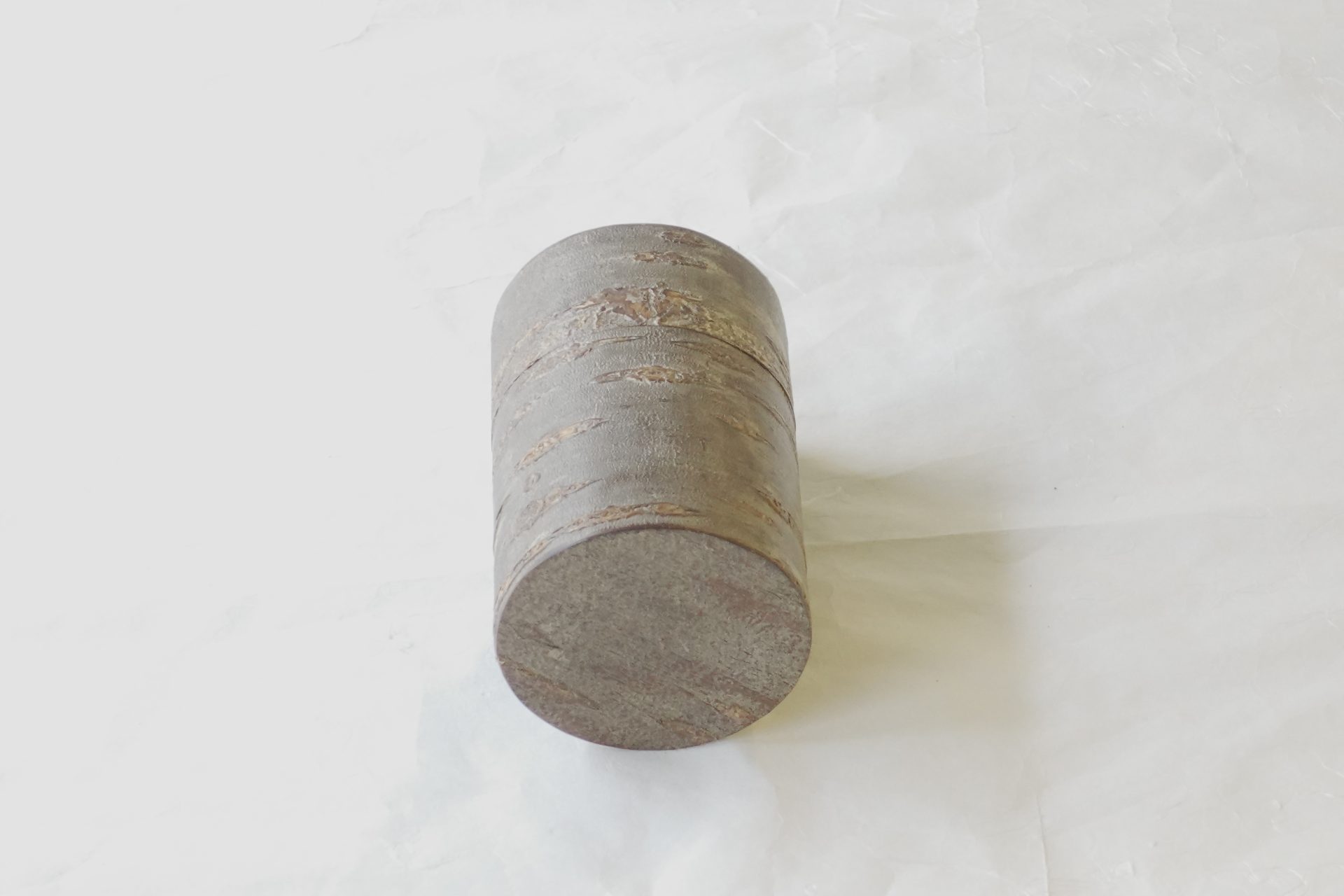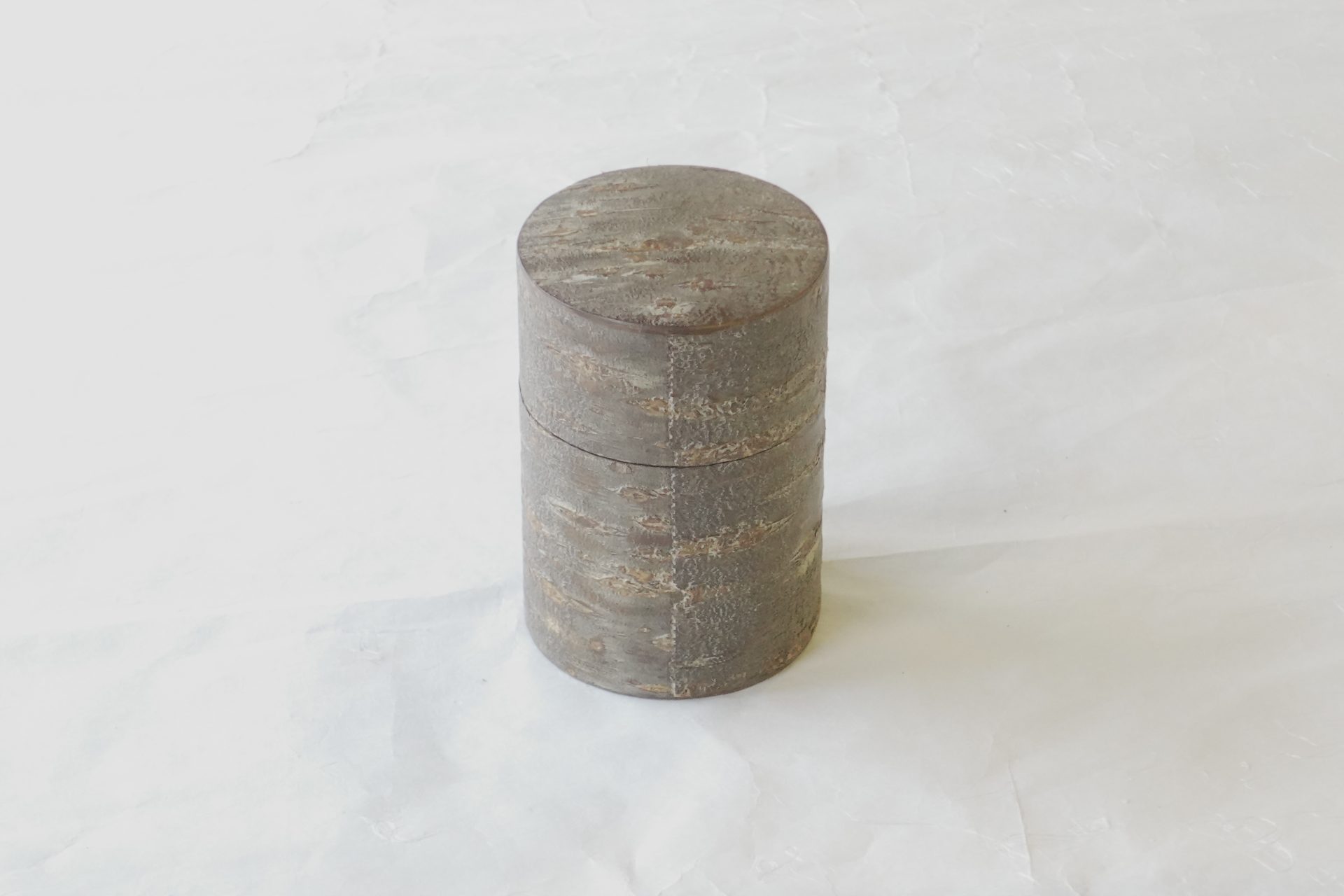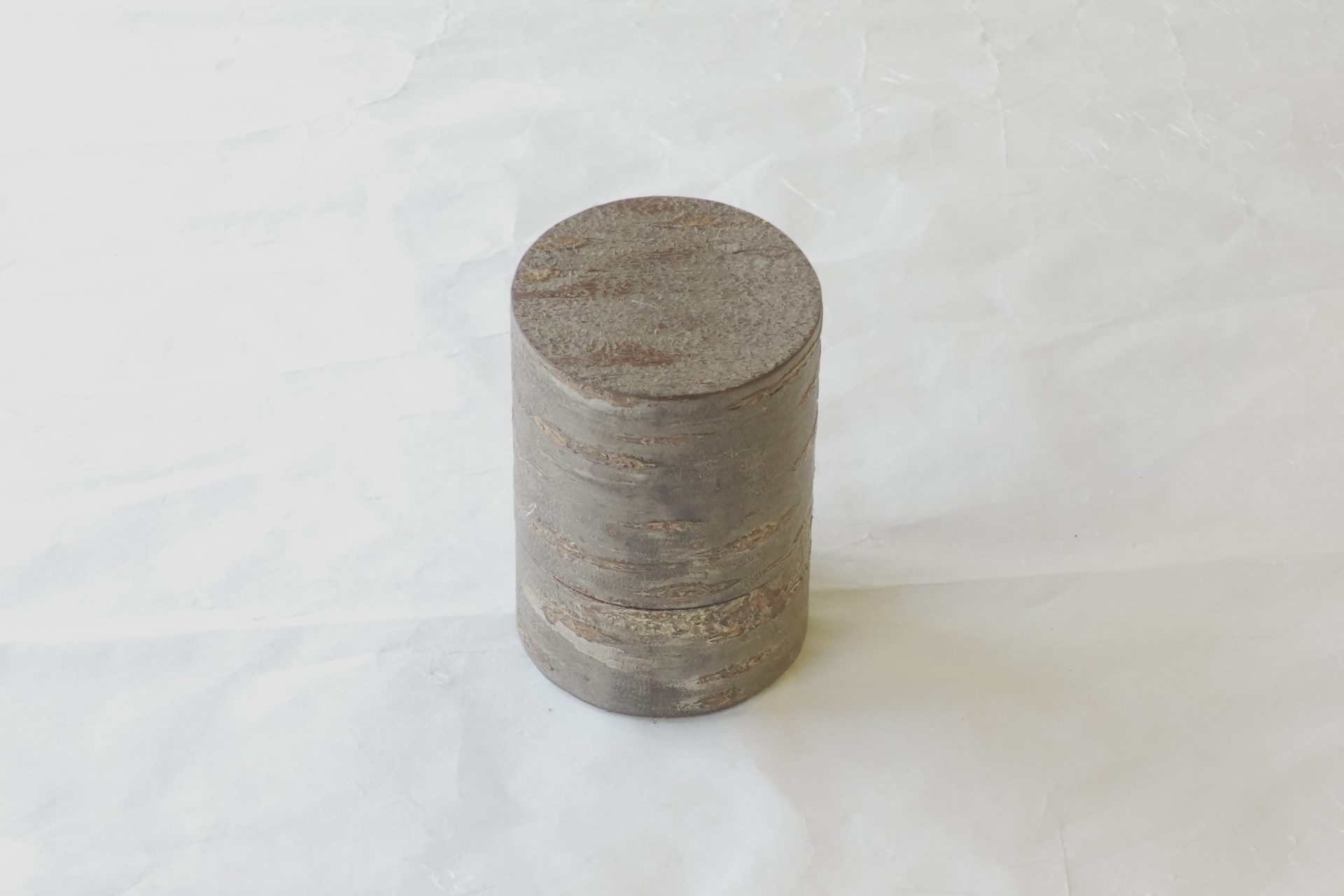径 8.2cm 高さ 12cm
容量 150g
木製 桜皮
Akita Prefecture Cherry Bark Craft Wooden Tea Canister – Large, Chirashi
We are pleased to introduce a wooden tea canister made from cherry bark crafts (Kaba-zukuri) produced in Kakunodate, Akita Prefecture.
The beauty of cherry bark craftsmanship has been celebrated since ancient times, as seen in works like the “Manyoshu” and “Genji Monogatari.” In the Shosoin, items such as brushes, bows, and sword sheaths made from cherry bark can also be found.
The technique of processing tree bark was reportedly brought to Kakunodate by Hikokuro Fujimura from the Ani region in northern Akita Prefecture around 200 years ago, during the mid-Edo period. Under the patronage of the Satake clan, it evolved from a craft of low-ranking samurai into a recognized profession.
Through the accumulation of advanced techniques and the pursuit of diversity, this unique Japanese bark processing has developed into a fine craft.
The chic luster of cherry bark and its properties of breathability and moisture permeability have led to the creation of lifestyle products that are widely cherished as elegant Japanese handicrafts. This traditional craft boasts excellent moisture and dryness resistance.
In 1976, it was designated as a traditional craft by the Minister of International Trade and Industry.
The cherry bark used for this Kaba-zukuri comes from mountain cherry trees in the Tohoku region, which are said to be particularly beautiful and durable due to the harsh climate in which they grow.
The cherry bark is carefully peeled from the trunk and dried in the shade for one to two years before use.
This tea canister is fully lined with cherry bark, both inside and out, including the reverse side. The exterior features “chirashi” bark, which has a gray surface with white parts. This type of bark has a unique charm and rich color, making it very rare, as it is used in its natural state without being shaved.
The other parts of the canister, including the underside of the lid and the inner lid, are made from “muzukawa,” which is the commonly used surface of mountain cherry that has been carefully polished.
When removing the lid, one can appreciate the exquisite airtightness between the lid and the body. The craftsmanship displayed here is truly remarkable.
This canister can be used for a variety of items beyond just tea, such as coffee beans, nori, nuts like peanuts, and snacks such as Kaki no Tane, which all benefit from protection against moisture.
In April 2010, antibacterial testing on cherry bark was conducted by the Japan Food Analysis Center, demonstrating that cherry bark possesses antibacterial properties against E. coli and Staphylococcus aureus. This provides assurance that it protects stored food from harmful bacteria.
While it’s unclear if our ancestors understood these antibacterial properties through modern scientific means, it’s impressive to think they may have had an intuitive grasp of this knowledge.
Despite being a natural material, this product effectively combines moisture resistance, dryness protection, and antibacterial properties. Moreover, it is made from eco-friendly materials that decompose in the soil, with no harmful side effects from its antibacterial qualities, making it a premium product worthy of global recognition.
In recent years, quality cherry bark has become increasingly difficult to obtain, leading to a serious shortage of materials. Consequently, pieces made with generous use of single-layer bark have become rare.
The simplicity and beauty of natural materials, along with their changing hues and depth of luster as they age, are outstanding features of this product.
Using it regularly without reservation is the best way to care for it.
We recommend purchasing from a reputable specialty store, as similar imported Kaba-zukuri items are circulating in the market.
Dimensions: Diameter 8.2 cm, Height 12 cm
Capacity: 150 g
Material: Wood, Cherry Bark
秋田县产 樱皮 樺细工 木制 茶筒 总皮 大 ちらし
介绍一款在秋田县角馆制作的樱皮细工(樺细工)木制茶筒。
使用樱皮制作的工艺品之美,早在《万叶集》和《源氏物语》中就受到赞美,正仓院的宝物中也可以看到笔、弓、刀鞘等使用樱皮的物品。
樹皮加工的技艺大约在200年前的江户时代中期,由秋田县北部的阿仁地区的藤村彦六传入角馆,在佐竹城主的庇护下,从下级武士的手工业逐渐演变为生业。
经过长期的技术积累和多样性追求,我国独特的樹皮加工技艺发展成为了工艺品。
樱皮所具备的雅致光泽以及其特性——透气性和透湿性,造就了作为生活用品的美丽,这些手工艺品在日本广受喜爱。
这是一种优秀的防湿、防干的传统工艺品。
在昭和51年,获得了通产大臣的传统工艺品指定。
用于这樺细工的樱木为东北地区的山樱,生长在严酷气候中的山樱据说更加美丽且耐久性高。
樱树的树皮经过小心剥离后,需要阴干一至两年以便干燥。
这个茶筒的外侧以及内部均贴满了樱皮。
外侧使用了ちらし皮,ちらし皮表面为灰色,部分呈白色,在山樱树皮中具有独特的韵味和深沉的色调,因而非常稀有,通常不经过削磨,保留自然的风貌。
其余部分,包括盖子的内侧、内盖及主体内部则使用了无地皮,即常见的山樱表面经过削磨并精心打磨的材料。
在拆盖时,可以感受到与主体之间绝妙的气密性。
这份精巧无疑是工匠技艺的体现。
可以放入的物品不仅限于茶,还包括咖啡豆、海苔、坚果类如花生,以及不喜欢湿气的零食如柿种等。
在平成22年4月,日本食品分析中心进行的抗菌测试表明,樱皮对大肠杆菌和黄色葡萄球菌具有抗菌效果。
这证明了樱皮能够保护食材免受有害细菌的侵害,使使用更加安心。
现代科学揭示的抗菌效果是否为230年前的先人所知尚不可知,但如果他们凭直觉意识到这一点,我们只会对先人的智慧深感敬佩。
作为天然材料,樱皮同时具备防湿、防干和抗菌的高科技特性。
而且,它是可以自然降解的环保材料。
这是一款没有任何抗菌副作用的世界级优秀产品。
近年来,优质樱皮变得稀缺,材料短缺已成严重问题,能够不吝惜一整张皮的产品已经非常稀少。
天然材料的质朴与美丽,使用越久、时间越长,色调和光泽都会发生变化,展现出独特的深度特征。
将其用于日常生活是最好的保养方式。
由于市场上出现了进口的樺细工类似品,建议您在可信赖的专业店铺购买。
直径 8.2 cm 高度 12 cm 容量 150 g 木制 樱皮
